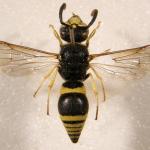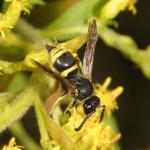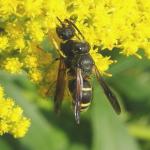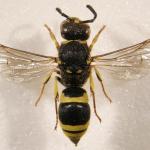Yarrow (1954b) introduced this species to the British list giving characters by which it can be separated from A. parietum. Identification keys and general biology are given in Nielsen (1932), Spradbery (1973), Felton (unpublished), Richards (1980) and Yeo & Corbet (1995).
Ireland, Wales and England north to Stockton-on-Tees, including Lundy Island, Isles of Scilly and the Channel Islands.
Overseas, found in many parts of mainland Europe (Norway, Sweden, The Netherlands, France, Spain, Germany, Italy, Poland, Austria, Ukraine, Romania, Bulgaria) and in North Africa (Morocco).
The species is not regarded as being scarce or threatened.
Found in a wide variety of habitats including sandy and clay soils, river banks, coastal areas and open urban, parkland and wooded areas.
Probably univoltine; generally on the wing from June to August, and rarely during May, September and October.
Lepidoptera larvae.
A tube-dweller, similar to A. parietum. The egg hatches after a few days and the larva eats the prey in one to two weeks. When fully fed the larva may remain motionless for a day or two before it voids waste products from the gut and spins a cocoon. When winter diapause is absent the pre-pupal stage lasts for about one week, followed by pupation. The adult appears about two weeks after the start of pupation. With winter diapause, the pre-pupal stage is extended for the winter season. After emergence the adult moistens the clay partition to facilitate an exit.
Sea-holly, bramble, hogweed and thistles.
Chrysis species, as for other species of Ancistrocerus.
1998





